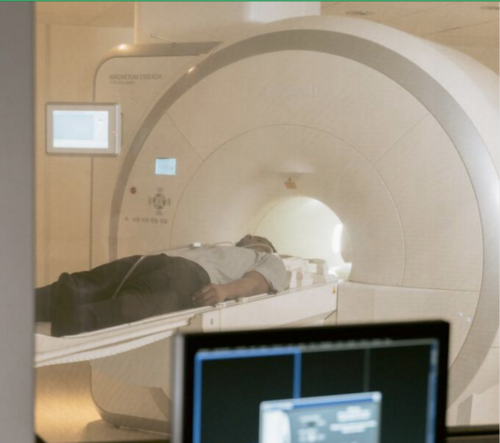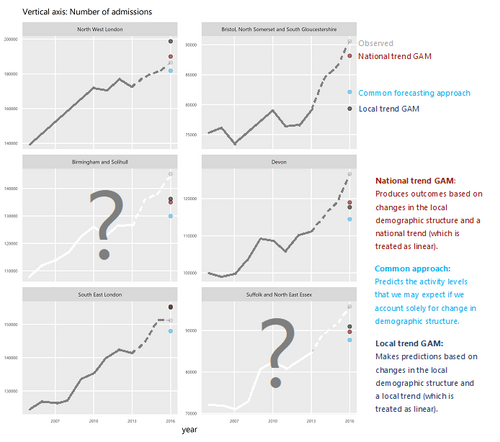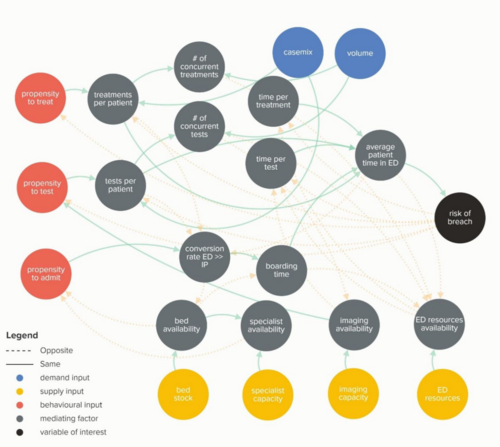 Emergency care | Inequalities | Primary, community and social care services
Emergency care | Inequalities | Primary, community and social care services
Learning about what works in urgent community response
The initial report from the national urgent community response (UCR) evaluation, along with an economic modelling tool to help service providers and systems understand the impact of UCR, is now available.
 Elective care | Emergency care | Policy
Elective care | Emergency care | Policy
How is growth in diagnostic testing affecting the hospital system?
Diagnostic services, such as medical imaging, endoscopy, and pathology, have grown substantially in recent years and at a faster rate than most other healthcare services. Increased diagnostic testing brings benefits to patients, but rapid growth of this service area within a complex, adaptive…
 Evaluation and impact assessment | Futures thinking | Learning and development | Strategy development
Evaluation and impact assessment | Futures thinking | Learning and development | Strategy development
Evaluating and embedding social values in procurement at East London NHS Foundation Trust
This report presents emerging findings from the early development stages of a social value approach to procurement by East London NHS Foundation Trust (ELFT). These findings provide insights for other organisations beginning to explore how to use procurement to contribute to improving health and…
 Better use of analysis | Elective care | Emergency care | Inequalities | Primary, community and social care services | Public health and prevention
Better use of analysis | Elective care | Emergency care | Inequalities | Primary, community and social care services | Public health and prevention
Less noise and more light: using criteria-driven analysis to tackle inequalities
Reducing health inequality is a long-standing aim of health policy. Yet the gap between policy aim and population outcome has grown in recent years: on most measures health inequalities have got worse.
 Elective care | Emergency care | Finance and payments | Policy | Primary, community and social care services
Elective care | Emergency care | Finance and payments | Policy | Primary, community and social care services
How will we know if Integrated Care Systems reduce demand for urgent care?
The implications of a blended payment system are far reaching: Decisions about planned activity levels will determine the total funding envelope for urgent care within a system and will influence the behaviour of healthcare providers and the services they deliver to patients.
 Emergency care | Policy
Emergency care | Policy
Waiting Times and Attendance Durations at English A&E Departments
In March 2019, NHS England is expected to report the outcome of its review of constitutional waiting times targets. This report reviews the factors that have led to the decline in performance against one of these targets - the 4-hour target for Accident and Emergency Departments. The analysis…
Horizontal or Vertical: Which way to integrate?
In 2011, Primary Care Trusts faced a difficult choice. The Transforming Community Services policy required a complete break of commissioner and provider functions. But what should PCTs do with the community health services they delivered; vertically integrate with an acute trust, horizontally…
Identifying Potential QIPP Opportunities - Dudley Example
Given the pressures within the NHS, being able to identify opportunities for efficiencies and improvements is vital to inform commissioning intentions. This report is an example of analytical work which to support commissioners. The objective of this report is to provide information to…
Changes to Admission Thresholds
This analysis builds on a paper, Changes in Admission Thresholds in English Emergency Departments, which explores changes in the casemix of patients attending emergency departments (EDs) and the propensity of EDs to admit patients. The report incorporates additional analysis commissioned by…
Stage 2 Clinical Assurance Evidence Framework
Service change assurance exists to give confidence to the NHS and public that proposals are well thought through, have taken on board a wide range of views and will deliver real benefits. At the heart of the NHS England assurance process are the ‘five tests for service change’ that are in the…
 Elective care | Emergency care | Inequalities
Elective care | Emergency care | Inequalities
Future Fit - acute hospitals options appraisal
The Strategy Unit worked as a strategic partner of the NHS Future Fit Programme in Shropshire and Telford & Wrekin from its initiation and until it was able to move to public consultation. A key output was the comprehensive appraisal of acute hospital options, the recommendations from…
Integrated Impact Assessment for Major Hospital Reconfiguration
The Strategy Unit worked as a strategic partner of the NHS Future Fit Programme in Shropshire and Telford and Wrekin from its initiation and until it was able to move to public consultation. A key output was a comprehensive Integrated Impact Assessment of acute hospital options that enabled…
 Elective care | Emergency care | Primary, community and social care services
Elective care | Emergency care | Primary, community and social care services
Integrated care: rapid evidence scan
Exploring what integration can mean in different contexts, we have summarised evidence on effectiveness and cost effectiveness of integrated care, alongside lessons for implementation and considerations for measurement and evaluation.
Unplanned admissions: rapid evidence scan
Reducing unplanned admissions is a key priority for local health economies. This rapid evidence scan will help you to navigate the evidence base on various service interventions and their impact on unscheduled care.
 Elective care | Emergency care
Elective care | Emergency care
The Effect of Demographic Change on Acute Hospital Utilisation
Recognising that the effect of population ageing can be overstated, we set out to ask what effect an older population will have on demand for health and care services. Here, we explain why typical approaches ‘overlook the fact that rising life expectancy makes … older people “younger”,…
 Elective care | Emergency care
Elective care | Emergency care
Modelling Patients Flows under Potential Configurations of Emergency Centres with Specialised Services
Onsite, 24/7 access to complex vascular surgery, hyper acute stroke services and primary percutaneous coronary interventions are expected to be a pre-requisite for a hospital to be designated as an emergency centre with specialised services. This paper sets out the patient access and patient…